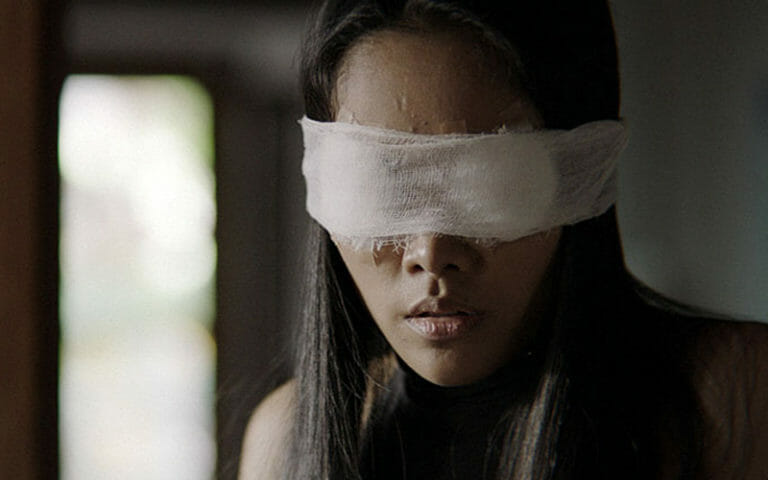By Ben Larned · May 26, 2017

While it’s a classically entertaining genre, one of cinema’s first staples, horror films also have the great potential for sociological commentary. Romero’s Dead series, They Live, Invasion of the Body Snatchers and Rosemary’s Baby are all widely considered to be not-so-carefully disguised statements about very real issues. New to this tradition is Mattie Do’s Dearest Sister, a film that uses the supernatural to draw out themes of human corruption and greed. A stylish and well-acted work, it also benefits from a screenplay calibrated by Do to examine actual nightmares in its country of origin, Laos. Her story, put into screenplay form by her husband Christopher Larsen, cuts deep – and there are several takeaways from its success.

KNOW YOUR MYTHOLOGY WELL
The ghosts in Dearest Sister don’t moan prophecies or thirst for blood. They spell out lottery numbers. Nok, the protagonist, encounters these spirits through her cousin Ana – a woman with a degenerate condition slowly taking away her sight. The further the condition advances, the more she encounters grotesque spirits that whisper lottery numbers into her ear. This is part of the film’s fascinating charm – it introduces a new concept into cinematic ghost lore. Lottery-prophesying phantoms are a part of Laos culture, and Do and Larsen are first to bring it to the screen. These ghosts are visually consistent, always appearing as they looked the moment of death, and always whispering the numbers with bone-chilling apathy. The pre-death specters that predict a future tragedy also create a constant source of narrative surprise. Larsen writes this mythology into an authentic political atmosphere, though; first and foremost, this is a film about personal conflicts.
…BUT YOUR CULTURE BETTER
Phantoms are scary, and Do’s in particular send chills down the spine, but her story is driven by the culture of her Laotian setting. Imperialism, classism and plain old fashioned greed take the focus of this script. When Nok discovers her cousin’s strange ability, she begins exploiting it – under the guise of assisting her. She finds a bizarre opportunity to rise above her rank, gain wealth that she’s been denied, and she goes after it. The life she chases is that of her cousin, Ana, but even Ana’s comfort had to be acquired through marriage to an imperialistic and dismissive European man. Classism is an immediate issue in Laos, as Do has discussed, and Larsen uses it to bolster their fantastical storyline. The ghosts aren’t as frightening as the greed, originating from a culture rife with inequality.

CRAFT STORY AROUND PERSONALITY
Do’s film places its focus on politics and psychology, but also people. Each plot beat echoes a person’s desire and either feeds it or takes it away. Nok and Ana are at odds in both world and objective, one privileged in status but losing a fundamental sense, while the other has nothing except a caretaker’s power. Larsen spins this tense, unsettling plot from the core of their conflict, at once very specific and dishearteningly universal. In the end, it’s these two living characters who create the nightmare, not the ghosts. For this reason it’s all the more frightening. Ghosts are fiction, but this type of jealousy is not – and it really can lead to violence.
MAKE YOUR OBJECTIVES TANGIBLE
While the politics and symbolism of Do’s film are complex, her characters are fighting for things that we can all recognize. Who hasn’t felt envy toward another for something they own, and you don’t? Or the battle between maintaining pride and survival – when one makes the other impossible? Nok longs for not only money, but importance; while Ana has fought to gain both and is losing her vision in tandem. It boils down to simple objectives, which an international audience can understand even when the cultural nuances slip past them. This is what gives Dearest Sister its lasting chill, and makes it one of last year’s best horror films – its grotesque qualities translate to emotions that we know, exaggerated by the presence of ghouls.

—
This Gothic creeper is currently streaming on Shudder. It’s one of the best horror films of last year, perhaps the decade – and introduces us to a major genre talent.